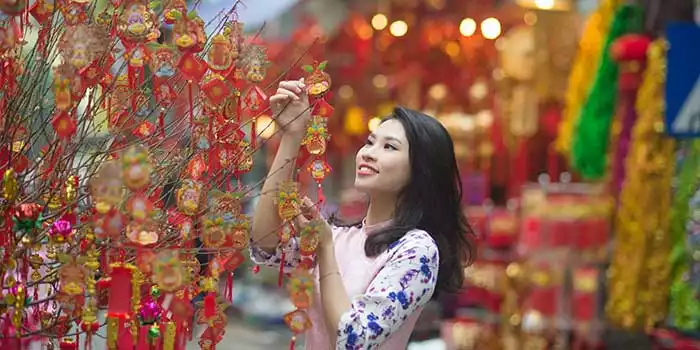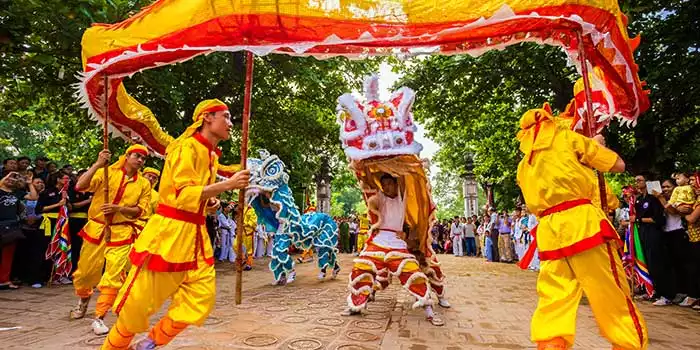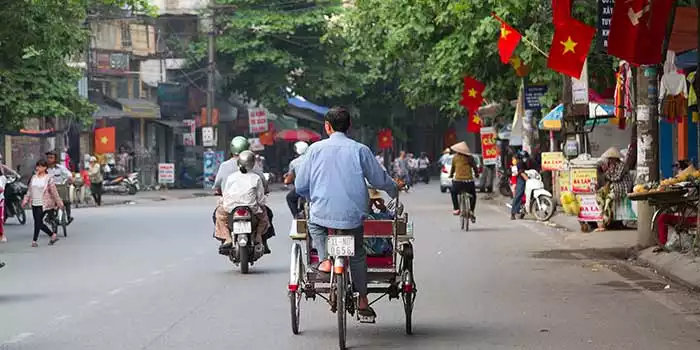
Discover the best time to travel to Vietnam with Wendy Wu Tours
The best time to visit Vietnam as a whole is the spring (March and April) and autumn (September to December).
However, due to its long, narrow shape, Vietnam’s climate picture is surprisingly complex. There are big variations in climate between the north and south so if you’re exploring the whole country, it’s best to be prepared for anything! The south is more tropical, with more constant temperatures, whilst the north, has more seasonal variations and can get really quite cold especially the highlands.
The weather is dictated by two monsoons – the southwest monsoon is May to September and the northeast monsoon is October to April. Deciding when to travel to Vietnam is a bit of puzzle -December to March sees plenty of sunshine in the south and low temperatures in the far north, July and August are hot and humid with downpours whilst November to April is when the least rain.

Order your FREE copy of our new Southeast Asia brochure, featuring our award winning collection of escorted tours, private tours and tailormade holidays (including new itineraries for 2026-27).
Vietnam | Cambodia | Laos | Thailand | Philippines | Singapore | Borneo | Indonesia
January is a month where the whole of Vietnam is experiencing dry and sunny weather, though there is quite a big variation in temperature between the north and south. Whilst in the south and central regions you’ve got lovely warm temperatures with low humidity, in the north you’re looking at much cooler temperatures – around 18 degrees, and even cooler up in the highlands.
This is a great time to go on a river cruise as it’s dry season – there’s no rain to worry about, the waters are calm and the temperatures are just right.
Celebrated in late January – early February, depending on the lunar calendar, Tet sees in the new year, and is Vietnam’s biggest holiday. It’s time to declutter and make a fresh start, throwing a few fire crackers to scare away the evil spirits. If you are travelling at this time, expect plenty of celebrations and beautiful decorations, that some businesses might be closed for the holidays for up to 5 days, and that popular attractions are extra busy.
One of the best times to visit Vietnam, the weather is warm or hot and dry throughout the country. Around Hoi An, in the central region, temperatures hover around 25? whilst in the south around Saigon they’re in the high 20s, both gloriously sunny. Hanoi is cooler but bright and sunny, whilst up in the highlands, around Sapa, the weather and temperatures are perfect for walking.
Celebrated in late January – early February, depending on the lunar calendar, Tet sees in the new year, and is Vietnam’s biggest holiday. It’s time to declutter and make a fresh start, throwing a few fire crackers to scare away the evil spirits. If you are travelling at this time, expect plenty of celebrations and beautiful decorations, that some businesses might be closed for the holidays for up to 5 days, and that popular attractions are extra busy.
The temperatures continue to rise, making it full on beach-worthy weather in the south and central coasts. In the north it is dry and bright, and the very best time to cruise on Halong Bay, as the skies are perfectly blue and the chances of rain very low. Due to how good the weather is throughout the country, this is one of the most popular times to travel in Vietnam, so sights and attractions are likely to be busy.
The Thay Pagoda Festival commemorates the life Tu Dao Hanh, a Buddhist monk and inventor who lived during the 11th century. The folk hero is celebrated with a procession and water puppetry performances in the small village of Thay just west of Hanoi, in the third lunar month of the year, either March or April.
Talk to our Tailor-made team about visiting the Thay Pagoda Festival.
The end of the peak season, so things can still be pretty busy, the weather remains good throughout the country. The north is now in the mid-20s temperature-wise with a chance of rain towards the end of the month, and things heat up the further south you go. In the very south itself, there is now a greater chance of rain, but it’s still mostly dry if a bit humid.
The Thay Pagoda Festival commemorates the life Tu Dao Hanh, a Buddhist monk and inventor who lived during the 11th century. The folk hero is celebrated with a procession and water puppetry performances in the small village of Thay just west of Hanoi, in the third lunar month of the year, either March or April.
Talk to our Tailor-made team about visiting the Thay Pagoda Festival.
This countrywide holiday celebrates the lives of the ancient Vietnamese rulers said to be the founding fathers of the nation. Ceremonies are held in over 1,400 Hung Kings temples across the country with the key ceremony attending by millions of revellers at the Hung Temple on Nghia Linh Mountain northwest of Hanoi.
Talk to our Tailor-made team about visiting the Hung Kings Festival.
Things start to quiet down as the temperatures and humidity go up across the country. In the north, this is the beginning of the hot, wet summer with the occasional afternoon shower. In the south things are steamy, with the odd downpours at the end of the month announcing the monsoon. The central region and the highlands remain pleasant.
International Labor Day is held on May 1. Held to commemorate the international workers’ movement of the 1800s it is marked by celebrations and parades held in central squares throughout the country, whilst many families enjoy the holiday picnicking outdoors.
Rain is on the increase in central Vietnam now and the temperatures are starting to go down towards the mid-20s though there is still plenty of sunshine to be had. The north and the south remain wet with the rain beginning to ease towards the end of the month. This is a wonderfully quiet time to travel if you don’t mind a bit of rain.
An ancient celebration of the end of the harvest, the Mid-autumn Festival, known as T?t Trung Thu, can fall in either September or October depending on the full moon. Children take centre stage with gifts of lanterns, masks and toys. Mooncake stands can be found on every street corner and lion dances add to the festival atmosphere.
A national holiday celebrating Vietnam’s declaration of independence from France in 1945. Flags and fireworks can be seen all over the country and parades are held in Hanoi, Ho Chi Minh City and Da Nang.
In the north of Vietnam, the rains have cleared, the skies are blue and the humidity has dropped; even up in the northern mountains you can head up to Sapa to explore the rice terrace and hilltribe villages. In the south the rains continue to ease off and the central highlands, places like Dalat, are open for business once more. The centre on the other hand is in peak rainy season, with the potential for storms and flooding.
An ancient celebration of the end of the harvest, the Mid-autumn Festival, known as Tet Trung Thu, can fall in either September or October depending on the full moon. Children take centre stage with gifts of lanterns, masks and toys. Mooncake stands can be found on every street corner and lion dances add to the festival atmosphere.
Read our latest articles or travel inspiration, exciting news about our destinations and all things Wendy Wu Tours








